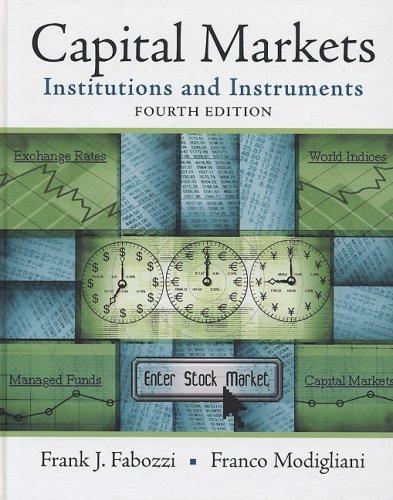In the previous problem, suppose the required return on the project is 12 percent. What is the project's NPV? Since we have the OCF, we
In the previous problem, suppose the required return on the project is 12 percent. What is the project's NPV?
Since we have the OCF, we can find the NPV as the initial cash outlay plus the PV of the OCFs, which are an annuity, so the NPV is: CF0 = $2,900,000 CF1=$1,232,083 F1=3 I=12%
NPV = $59,256.28
10. In the previous problem, suppose the project requires an initial investment in net operating working capital of $300,000, and the fixed asset will have a market value of $210,000 at the end of the project. What is the project's Year 0 net cash flow? Year 1? Year 2? Year 3? What is the new NPV?
The cash outflow at the beginning of the project will increase because of the spending on NOWC. At the end of the project, the company will recover the NOWC, so it will be a cash inflow. The sale of the equipment will result in a cash inflow, but we also must account for the taxes that will be paid on this sale. So, the cash flows for each year of the project will be:
Year Cash Flow 0 $3,200,000 1 1,232,083 2 1,232,083 3 1,668,583
= $2,900,000 300,000
= $1,232,083 + 300,000 + 210,000 + ($0 210,000)(.35)
And the NPV of the project is: CF0 = $3,200,000 CF1=$1,232,083 F1=2 CF2=$1,668,583 F2=1 I=12% NPV = $69,948.35
Step by Step Solution
There are 3 Steps involved in it
Step: 1

See step-by-step solutions with expert insights and AI powered tools for academic success
Step: 2

Step: 3

Ace Your Homework with AI
Get the answers you need in no time with our AI-driven, step-by-step assistance
Get Started


